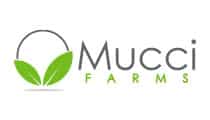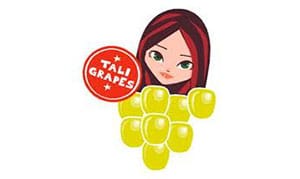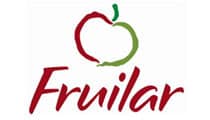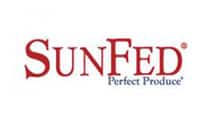The Importance of Fruit Quality Control & Ripeness Testing for Cherries
You might not know it to look at them, but cherries are actually related to plums, peaches and nectarines. They also belong to the rose family – believe it or not!
Optimizing cherry quality control and ripeness testing has become an essential task for anyone across the value chain in the fresh produce industry – from growers and pickers, to warehouses, marketing companies, wholesalers, retailers, and consumers. Without improving the method of growing and harvesting cherries, we are inviting waste and standing in the way of increased productivity, profit, and control.
Luckily, cherry evaluation just got a whole lot easier, with a cherry testing tool for a streamlined cherry standard across the board, using big data and analytics via the Clarifruit platform.
Common Defects when Growing & Harvesting Cherries
The following cherry defects are the ones that are most likely to affect fruit quality for cherries across the supply chain:
No Pedicel
When the pedicel is missing from a cherry, the fruit could lose more water and this could cause problems down the line in terms of the taste or ripeness of the cherry.
Pests
There are many pests to look out for when it comes to cherry quality control. For example, birds, fruit flies, leaf-spot, moths, and maggots.
Pitting
Small pits or bumps in the skin of cherries is a serious post-harvest defect that usually develops during storage.
Deformation
There can be many reasons why a cherry may lose its usual round shape, including pests (mite feeding damage), nutritional deficiencies, or toxicities.
Low Color/Color Defect
Any cherry color issue that arises when growing and harvesting cherries is usually the result of irrigation inconsistencies or a lack of nutrients in the soil. The color deepness also varies as a result of multiple factors.
Insect Damage
The cherry fruit fly is probably your most common suspect when it comes to insect damage for a cherry plant. Also look out for leafhoppers, aphids, slugs, and moths.
Healed Wounds
A healed wound on a fruit does not always mean that all is well. In the case of cherries, fruit flies could have laid eggs or other fungi could have made its mark inside the fruit.
Stains
Over/discoloration on the skin of the cherry could be the result of rough handling, machinery, weather, or pests. It’s not always easy to tell from the human eye alone.
Russet
You’ll be able to recognize this problem in cherry evaluation by the distinctive rust-like colored stripes on your cherries. Russet results from micro-cracking of the cuticle, the outer epidermal layer of the fruit. When the cuticle cracks, a corky, suberized layer is formed on the fruit skin. It could be the result of environmental issues or perhaps damage from machinery.
Dehydration
Insufficient water is a problem for soft fruit such as cherries. Dried berries can also be caused by skin damage that leads to water evaporation.
Softness
The best way to pick cherries is yet to be defined, but if you’re not careful, handling can cause softness, especially if the cherries are picked and handled when they are very ripe.
Bruising
Bruising is a normal fact of life when it comes to growing and harvesting cherries, and it can happen at any point from the time they are picked to the time they are sold by retailers.
Overmaturity
Overmature cherries will have a poor flavor and may also be shriveled, have dried-out stems, or look far duller than the rest of your fruit.
Decay/Rot
Any fresh produce can suffer from rot or decay and cherries are no exception. Note that circular brown spots on the cherry plant could be a sign of Brown Rot, a serious form of decay.
Open Wounds
Wounds can happen at any stage as the result of mechanical damage, natural causes, or even rough handling. Once the fruit is wounded, further opportunistic damage generators like insects or fungi can attack the cherry easily.
Split Berries
If you spot a split in the skin of your fruit when growing and harvesting cherries, you can probably attribute this to too much water.
Watery
If fruits receive improper pre-harvest fungicide application, poor washing and selection, spoilage microorganisms can cause post-harvest storage problems and some of their enzymes can destroy the extracellular structures of the fruit. As a result, the decaying fruit tissue will become watery and soft and may even smell like vinegar.
Interesting Facts about Cherries
- The top 5 countries for exporting cherries are, Chile, Hong Kong, the USA (particularly Washington, California and Oregon), Turkey, and Uzbekistan.
- The average cherry tree has 7,000 cherries. If just 20% of those have any defect whatsoever, that’s 1,400 less fruit for the next pie.
- Door County in Wisconsin is nicknamed Cherryville, because back in the 1950s, it was responsible for growing 95% of the USA’s tart cherries.
- Chile has the lead in terms of the cherry market with 35% of the global produce.
Common Cherry Attributes for Growing and Harvesting Cherries
The following internal and external cherries attributes are commonly used for quality evaluation:
Color
Diameter
Degrees Brix
Stem color
Firmness
For the full list of attributes that the Clarifruit platform currently evaluates and recommended quality standards for each, download our free app now.
The Clarifruit platform also integrates with 3rd-party technology to evaluate external tomato attributes. Learn more here.
Cherry Growing Seasons in the Northern and Southern Hemispheres
| HEMISPHERE | Jan | Feb | Mar | Apr | May | Jun | Jul | Aug | Sep | Oct | Nov | Dec |
|---|---|---|---|---|---|---|---|---|---|---|---|---|
| Northern | ||||||||||||
| Southern |
Scroll left to see the growing seasons table















